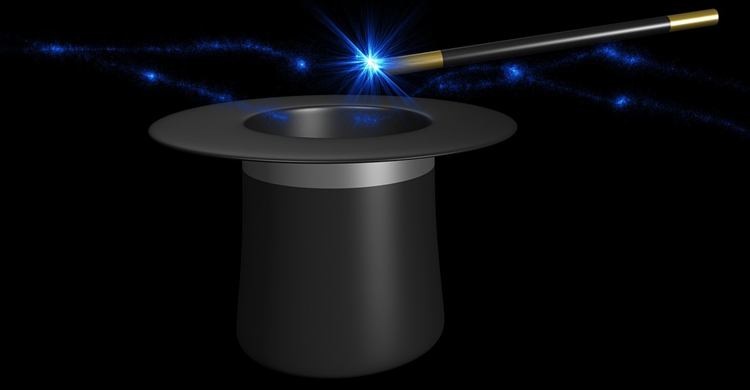Ondine is a mythological figure whose tale goes back to the ancient Greeks. She is described as a water nymph who fell in love with a mortal male. He is said to have eventually jilted her, causing her to curse him. She abolished automatic controls in his body so that he had to remember them and control them consciously. This included automatic breathing. Eventually he became so tired that he fell asleep. Automatic breathing ceased and he died. The Ondine character has appeared and reappeared throughout history and must have represented a phenomenon that had been observed many times as a cause of an inexplicable sudden death at night.
Automatic Breathing, Apnea, SIDs, and Ondine’s Curse
The human brain is connected to the spinal cord by means of a part of the brain called the brainstem. It contains nerve centers that deal with the control of automatic breathing. These centers are connected, through the autonomic nervous system, to the muscles and organs that control breathing, explaining why breathing continues without our having to think about it. It is an automatic life-sustaining process. Of course, we can interrupt the automatic mechanisms voluntarily. We can hold the breath, cough and laugh, examples of an important relationship between the voluntary and automatic mechanisms of a complex nervous system. If a failure occurs in the centers in the brainstem that control mechanisms of automatic breathing, this action ceases. Of course, when we are asleep, our voluntary control of breathing stops and we rely on the brainstem centers to control automatic breathing. A genetic defect in the brainstem centers causes a rare disease that has been called “Ondine’s Curse”. The patient can breathe voluntarily but automatic breathing ceases intermittently during the night, sometimes causing awakening with a startle. Life expectancy is short and the affected individual may die suddenly during the night. Many people reading this will become aware that I am also describing sleep apnea, which is really a less severe example of the same thing. Sudden infant death syndrome (SIDS) has a similar history.
Thiamine Deficiency and Brainstem Function
It has long been known that the lower part of the brain that includes the brainstem is highly susceptible to metabolic breakdown from thiamine deficiency. This metabolism is governed by an array of genes, some of which are activated in response to hypoxia (lack of oxygen). Because thiamine is absolutely essential to the consumption of oxygen (oxidation), lack of this vitamin is sometimes referred to as pseudo-hypoxia (false lack of oxygen). Therefore, a genetic defect in the automatic breathing mechanism might be affected by either hypoxia or pseudo-hypoxia, strongly implicating that a damaging effect might arise from either one, the other, or both together in combination.
I have successfully treated sleep apnea and threatened SIDS with pharmacological doses of thiamine and magnesium. A genetic error may not be a self-sufficient cause, requiring the addition of thiamine deficiency to precipitate the disaster. Now that we have the science of epigenetics (the ability of nutrients to react with the gene defect), it is, in my view, mandatory for a physician facing a clinical problem of this type to use pharmacological doses of thiamine and magnesium empirically. Even if it does not work, it can do no harm and might just save the day. To my knowledge, there are no pharmaceutical approaches available and it is unlikely that there ever will be unless the technique of gene replacement becomes a reality. Thiamine treatment even then should be the first line of approach because it is totally unstressful, nontoxic, cheap and I have seen some dramatic responses in my practice.
A Patient with Ondine’s Curse
Many years ago I had the care of a 12 year old girl who suffered from this disease. She was the child of a first cousin marriage and had lost two brothers from sudden death at night, so it was clearly genetically determined. I cannot remember the details, except that she was forced to use mechanical breathing assistance. As would be expected, she subsequently died. One day when we were studying her case, I was walking through the pediatric ward and noticed that she was sitting on the side of her bed. Her hands were raised in front of her with the fingers widespread; her eyes were staring and she was cyanotic (blue skin color). This was the position of great anxiety or panic, representing a fight-or-flight reflex. When she received oxygen administration, the cyanosis disappeared and she relaxed.
The Fight-or-flight Reflex
In many posts on this website, we have indicated that we have two types of nervous system. One enables us to move at will. The other one, known as the autonomic, is automatic and almost totally involuntary. This system, controlled by the lower part of the brain, including the brainstem, enables us to adapt to environmental change and governs the mechanisms for a number of important life-saving reflexes, the fight-or-flight being the best known. It can initiate mental and physical activity when a person is placed in a position of danger. It is not clear how the decision is made for flight or fight and this may depend on other factors in the personality of the individual. For example, a soldier may race up a hill, capture a machine-gun post and not know that he had a finger shot off in the process. It can imbue a feat of strength that enables a mother to lift the front end of a small car off her child who has been run over. Oxygen lack, as being experienced by my patient, was obviously exceedingly dangerous to her and fired the reflex, demonstrated by the characteristic positioning of panic. I treated this patient with thiamine, without effect, but had no regrets because I tried and there was no other treatment known.
Brain Chemistry and Genetics
The lower part of the human brain works rather like a computer or an information processor. It receives messages from the outside environment and signals the body organs through the autonomic nervous system. It is in constant communication with the rest of the brain. One of its important tasks is the maintenance of appropriate breathing. In the brainstem there are a series of cellular collections that since the status of oxygen concentration in the blood, thus enabling an adjustment in breathing appropriate to the oxygen concentration of the surrounding air. These centers are also sensitive to the efficiency of oxidation, the consumption of oxygen in the synthesis of energy. The first cousin marriage strongly suggests that my patient and her siblings succumbed to the effects of a genetic error. Aside from a genetic cause, one of the well-known weaknesses within this system is that this part of the brain is highly sensitive to a deficiency of thiamine, illustrated by the following case.
Mountain Sickness and Brainstem Thiamine Deficiency
A 75 year old woman came to my attention with a curious story. Every two weeks she would indulge in square dancing. On returning home she would succumb to a feverish episode that would last for several days. These episodes had, of course, been treated as infections, with little or no thought given to the association with square dancing. Laboratory studies revealed that she was deficient in thiamine, but in addition she had an abnormally high red blood cell count and hemoglobin. This is known as hemoconcentration and it would be expected to occur as an adaptive response to living at high altitude. In other words, an increase in hemoglobin and red cells would compensate for the low concentration of oxygen at high altitude. I concluded that the febrile episodes were an imitation of a well-known phenomenon known as mountain fever. Her brainstem was behaving as though the ambient oxygen concentration was equivalent to that of high altitude. However, the hemoconcentration compensation was insufficient because she had pseudo-hypoxia from thiamine deficiency.
Mountain fever occurs in people that have difficulty when they ascend to altitude and are said to be unfit for mountain climbing. Here was a woman that was developing this phenomenon at sea level. My explanation was as follows: her brain was marginally deficient in the vitamin necessary for oxidation and energy production for ordinary everyday purposes. The square dancing represented an additional consumption of energy for which some chemical adjustment had been made in her own system. Because this was insufficient the febrile episode imitated mountain sickness. These episodes disappeared after she was treated with pharmacological doses of thiamine.
Variation in Symptomology
It is obviously important to point out that this patient did not have Ondine’s Curse, even though oxidation was compromised in brainstem. Neither did my patient with Ondine’s Curse have mountain sickness. It represents an enormous difficulty in defining a clinical situation where two conditions are represented in different ways, although the underlying mechanism is similar if not identical. If this is the truth about disease, the symptoms that develop really represent an alarm system that has to be interpreted in terms of the underlying biochemical cause. Perhaps the focus on genetic causes may be too narrow and this seems to be true in cancer research. There is insufficient attention to epigenetic influence of nutrients on the action of genes and more attention should be paid to the nature of energy production in the mitochondria. Although both patients in this post had a widely different presentation, the underlying mechanism was similar if not identical.
We Need Your Help
More people than ever are reading Hormones Matter, a testament to the need for independent voices in health and medicine. We are not funded and accept limited advertising. Unlike many health sites, we don’t force you to purchase a subscription. We believe health information should be open to all. If you read Hormones Matter, like it, please help support it. Contribute now.
Yes, I would like to support Hormones Matter.
Image credit: Arthur Rackham, Public domain, via Wikimedia Commons.
This article was published originally on June 25, 2018.
















Dear Dr. Lonsdale,
Thank you for your amazing work. I have been dealing with Sibo/IBS, anxiety/depression, heart palpitations, postural hypotension, air hunger, and for the last few years chronic fatigue. Also, I have had unexplained elevated serum B12. After reading the articles by you and your colleagues on this site, it is all starting to feel connected with thiamine deficiency. I got some relief after starting Thiamine HCL but soon I started getting panic attacks, which are probably related to the paradox reaction. I plan to reinstate Thiamine more slowly and I hope I can finally get a handle on my health issues.
There are two other curious symptoms that I think are connected to Thiamine deficiency but I am not sure:
1) Burning sensation at the back of the neck approximately between the spine and my ear lobes, on both sides. The burning sensation is worse on days my chronic fatigue is worse. Since is it in the vicinity of the brainstem and the Cerebellum I think perhaps it is related to Thiamine.
2) Another unexplained symptom has been apnea-like complaints. I have bad sleep quality which I thought was due to sleep apnea, however, even after a few home polysomnogram tests, sleep apnea was not found. In the meantime, I tried a mouth guard for sleep apnea treatment and CPAP therapy as well, both of which improved my sleep quality and I continued with CPAP. I am guessing that perhaps due to thiamine deficiency, I have mild sleep breathing issues which don’t lead to an apnea diagnosis but apnea treatment still helps.
Hello, I have developed symptoms of vitamin b6 toxicity. I am taking B1 (900mg) + CoQ10 + PQQ
Is it advisable to take a B group vitamin supplement even if it includes vitamin B6? Is it normal to feel worsening symptoms after menstruation? Is there anything else I can do to ease the symptoms?
I hope you can answer me.
The quality of your writing never ceases to amaze me Dr Lonsdale!
I had this “mechanical” breathing phenomenon for 7 months after a rather mild covid infection. It was utterly horrifying. I couldn’t breath in deep and every breath felt like I had to force myself to breath and expel air. This was 24/7 for 7 months. Interestingly, my O2 would be fine and chest X-rays showed no structural damage. I could walk around, albeit very mindfully, but it was more from a psychological fear than a physical limitation. From what I’ve gathered of other long haulers, most never had any imaging abnormalities but venous gas oxygen exchange tests would come back abnormal. This is how I stumbled into this site and the idea of thiamine and/or mitochondrial dysfunction at the root of this breathing malfunction.
In a desperate effort I jumped right in at 300mg benfotiamine QD. For about 3 days it was like I was plucked out of the awful world of long covid and back in to reality. I’ve been a long hauler for almost 2 years but the breathing came into play after a mild reinfection earlier this year and having exercised too close to infection. Dr. Marrs wrote an article about the “black line” with thiamine deficiency. I firmly believe this is true. I’m in so many long hauler forums and many were previously young, healthy athletes that tried to exercise after infection.
Nonetheless, with the introduction of thiamine it was like the lights came back on cognitively. I had energy again. I was quick witted again. My memory was intact, particularly the anomia vanished. I was laughing again. The weird muscle spasms and jerks stopped. I got color back in my skin and my veins quit bulging. I was able to sleep laying flat again. (I’ve been experiencing Paroxysmal nocturnal dyspnea since my first infection which is helped by sleeping sitting up.) Most importantly, the mechanical breathing stopped and I could breath in deep again! No more bizarre incomplete yawns and weird gasping. After 7 months of 24/7 breathing abnormalities! Unfortunately, the paradox hit after about 5 days and I’ve been in it since.
I have no doubts that long covid is related to mitochondrial dysfunction and/or thiamine issues. I feel this and Cell Danger Response theory are at play in post pathogen exposure and especially with covid.
Some of the improvements have stayed such as the color in my skin, the improvement of dark circles, the bulging veins diminishing, the ability to breath, the lessening of depression and anxiety. What was worsened by the paradox was the brain fog and fatigue. I cut back the dose and after a month added in small doses of allthiamine. It is slowly improving and I’m in month 3. Had I not known of the paradox from this site, I likely would’ve stopped. I believe it takes much time to reverse and I firmly believe I was thiamine deficient prior to the pandemic. I definitely was magnesium deficient due to pre-existing heart palpitations that resolved after 2 years with the introduction of magnesium. I will report back once I’m more fully healed but wanted to share this early journey should other long haulers stumble into this article. Thank you from all of my being for the amount of research and awareness you have brought to healing with thiamine and mitochondrial dysfunction.
Hi Dr. Lonsdale,
I have found this site fascinating, I believe you may be able to help me get a better handle on what I am dealing with. I have spent my entire life dealing with various illnesses.
As a small child I got sick every winter with ear infections that caused perforated eardrums, until they did a tonsillectomy when I was four years old. Afterwards every winter I still dealt with a constant runny nose, and cough every winter.
When I was 27 yo I almost lost my job as a Respiratory Therapist because I started falling asleep at my job whenever I sat down. I had developed trouble sleeping with nightmares and waking up constantly from nightmares. I finally found an allergist who did testing and found I had developed Asthma with allergies to wool, corn, milk and a few other items. With asthma medicine and avoiding the items testing showed I was allergic to, I no longer fell asleep at work and sleep returned to normal.
All was ok for 2 years then I started to develop reactions to latex and chemicals used in the hospital and I had to quit working in hospitals. I went to work in a doctors office where I only had to deal with patients coming in wearing perfume.
When I was 38 I decided to have a child, my ob/gyn had me taking 1,500mcg folic acid before and during the pregnancy to prevent neural tube defects in the fetus. I had a drug-free natural delivery, the baby had a perfect Apgar score. My doctor had me continue the folic acid because I was breastfeeding, and after two weeks I started to feel badly. After two months I was getting so tired no sleep helped, another month and pain started all over my body. I started to react to all sorts of chemicals, and a specialist diagnosed me with Chronic Fatigue Syndrome and Chemical Sensitivities. The specialist treated me with Vitamin C IVs that also contained B vitamins and magnesium, and B-12 injections. The IV would give me energy that lasted 4-6 days. Depending on how many contacts with chemicals I had, less contact the longer I would feel good.
But it got too expensive to continue and I had to stop getting the IVs.
After a few months I started having memory problems, I would be driving and suddenly would not know where I was. I would be reading a book and would forget what I had read, after awhile I could not read at all because by the time I got to the end of a sentence, I could not remember what the sentence said at all. Pain went through roof, I could not even stand up at all some days. They put me on pain medication and I could barely function at all.
My husband died, and with money from life insurance I was able to afford medical care. Restarting the IVs I regained my ability to read and remember. And I moved to an area where there were fewer people wear chemicals.
At 43 I started to feel awful, like I was dying. My pulse got very irregular and faint, tests showed my body was not making growth hormone or thyroid hormone either. I was put on daily growth hormone injections and Synthroid.
At 45 yo I started having trouble with sleeping and nightmares once again, more testing and they discovered I had sleep apnea, I stopped breathing hundreds of times each night. I started using a CPAP machine, in addition to my asthma meds to breath.
At 50 I had an attack of arthritis and my right thumb froze, the arthritis specialist put me on methotrexate. I took only one pill and the skin inside my mouth peeled off. The antidote for methotrexate is massive doses of folic acid which they put me on.
My primary physician kept me on 1,000mcg of folic acid daily because my CRP was very high. Slowly my pain levels kept going up and I was put on a total of three different pain killers, just to keep my pain level at 7-10.
Then in 2012 I read an article in a women’s magazine that you could have low energy problems if you had certain gene mutations of the MTHFR gene. I asked for the test and found out that I had two copies of a MTHFR mutation that made it impossible for my body to convert folic acid into Methylfolate that the body can use. No wonder I had no energy, all the folic acid I was taking was basically just garbage in my body and mucking up my body’s ability to make energy. I switched to taking Methylfolate, and my energy started to improve a bit.
In 2017 I found out that the MTHFR gene mutations I have also make it difficult for my body to convert T4 into T3, my doctor put me on T3 three times a day. In three days my pain level dropped from 7-10 down to 2-3, and I was able to cut the amount of pain medication from four tablets a day down to two tablets a day. And my pain level stayed at 2-3.
Now at 63, in February 2018 I had all the signs of a stroke, my right arm and leg became paralyzed, I could not read at all and speaking was very difficulet, I could not find the words in my mind, but the workup showed no stroke. Over three days things got better, but I was discharged still weak and unable to walk with a diagnosis of hemiplegic migraine. Did I mention I had migraines since puberty?
So here I am, with a weak right side, awful feelings in the back my brain that get worse as the weakness gets worse.
And now to top it off, the muscles of my right arm and leg are shrinking andcdisappearing, and the weakness is getting worse. All this is making it impossible to make food, and I find myself eating sweet things that do not need cooking.
After reading multiple articles on this site and thinking back over all my illnesses it struck me. Oh my god, each and every time I was either eating poorly or trying to eat vegetarian foods that had little or no thiamine in them.
Little thiamine on top of the folic acid and cyanocobalamin that my body could not convert due to the MTHFR gene mutations…….no wonder I am a mess.
So, my question is this. I have ordered Lipothiamine made by Cardiovascular Research Ltd that I should get today or by Wednesday at the latest. How much should I take? What kind of magnesium and how much to take with the Lipothiamine?(I have magnesium citrate softgels, and magnesium chloride crystals for making a skin spray available in the house) What other vitamins or other things do you recommend?
Right now I am desperate, I have a 26yo autistic son I take care of and I need to get well. I have to use a crutch to walk and get around because my right leg will collapse under me suddenly. Testing shows my right hand grip strength is already half as much as my left hand, and I am right-handed. My right hand was much stronger than my left hand in January.
Any and all advice you can give me will be deeply appreciated, and I will get my physicians to do whatever I can. Thank you so much.
Aelxa
Dr. Lonsdale,
I am a part of Erin’s group, and I am so grateful to her and you for all of the information you have discovered and provided.
I am going to try again with seeing a new doctor, I plan to see a neurologist. I am nervous to present this as a new patient and my first visit. I have printed a ton of literature to support my “case.” Do you have any suggestions of specific information to provide, things to say, or specifically not to say. Any suggestions from a professional who truly understands this would be much appreciated.
Carissa
I would quote my post answer but remove the bit about ignorance of physicians.
Hi Erin.I’ve read some of your blog and congratulate you. You might suggest to your group that our book “Thiamine Deficiency Disease, Dysautonomia and High Calorie Malnutrition” is available on Amazon books and has 14 reviews. Emphasize that it is written for educated patients who are often stunned by the ignorance of their physicians concerning an extremely common phenomenon in America, thiamine deficiency disease. It contains technical details expressly for physicians that can be skipped over by non-physicians. I have another book available at the same site “A Nutritional Approach to a Revised Model for Medicine” and this was written expressly for the lay public so it is easier reading. There is a lot of information concerning thiamine deficiency on Hormones Matter
Hi Dr. Lonsdale. Thank you for your time and research. I was diagnosed with Type 1 Diabetes 12 years ago at the age of 41. At the time, I was very fit, ate really well, and was very good natured with a forever upbeat attitude. I hadn’t been to a doctor’s office in 5 to 6 years and I always used natural remedies and even worked part-time in that business. I was newly married the year prior to diagnoses and started a new job that was very stressful 2 years prior to that. The Docs thought it was odd that I would “contract” this disease at such an age not to mention how fit I was. Nevertheless, onto insulin it was. (I like to think if my new love of my life wasn’t so worried about things, I probably wouldv’ve looked into an orthomolecular and/or natural doctor or process, but we can only speculate)
Fast forward to about 6 years or so ago, I slowly started having more issues other than what comes with the Type 1, the glucose highs and lows, etc. I lost my energy, my libido, and my zest for life. I became anxious, I started getting more daytime/nighttime calf cramping, shortened sleep duration (I can’t sleep past 2-3am), constant eyelid twitching/occasional trigger thumb/finger, I started snoring (my wife used to tell me when we first got married that when she would watch me sleep, she would get scared b/c it seemed like I would stop breathing bit a but I never snored back then), high B-12, and very high SHBG (sex binding globulin. Last lab was 171.2). The B-12 and SHBG testing was about 3 yrs ago when I started losing more energy and motivation. I had to request the labs myself since the docs usually start their answers to most of my questions with “You’re a diabetic – that’s the reason” “You’re testosterone is fine” or something of the nature. So, add the diagnosis of Hypogonadism due to very low free T, but normal regular (T) testosterone. Was given an Rx for Androgel which actually helped my mood and energy a tinge but didn’t do anything else and certainly didn’t lower my SHBG. And it doesn’t really do anything now. Just FYI, my sugars are controlled, last A1C was 6.8. Docs want me up to 7, I want it lower!
Having researched so many things over the years and having tried so many supplements, I’m shocked that I’ve never stumbled upon or studied upon Thiamine Deficiency. Maybe it had to do with an ad I saw for Benfotiamine some years ago which touted support for Type 2 Diabetes so maybe that’s why I’ve never been interested or maybe b/c I’ve always taken vitamins containing some thiamine, who knows.
Well, last week I started using Lipothiamine. Yes – I had the most unbelievable, amazing, initial 24 hours followed by 2 awful days of cramping, fatigue, constant urination, heightened anger, depression and worry, lower sugars. Now 3 days later and I’m feeling much better. Taking 2 pills/twice per day after 5/d the first two days, I have a little more motivation, I wake up with more energy, I have less overall soreness, no cramping at all, lessened carb cravings, and way less brain fog. (Btw, I went out and got some MgCl and KCl and this has done wonders. ((My serum labs over the years have always shown mid to upper ranges of both. I know – serum, not cellular))
So, here are my questions if you have any time after my incessant ranting (believe me, there’s so much more):
1) Do you think I should stick with 4 pills of Lipothiamine/day (200 mg)?
2)I’ve always thought I had symptoms of hyperoxia, not hypoxia. When I lay down at night, I have to be careful not to take deep or even normal breaths or I’ll get some hyperventilating symptoms. What do you think?
3.Where does the high sex binding globulin fit into all of this if at all?
4. Do you think most of my short term improvements have more to do with the high dose MgCl and KCl or Lipothiamine or all 3?
Thanks again – I really, really, really appreciate your time and understanding,
I will try to answer your questions.
1. Diagnosis of diabetes at age 41. I don’t know why your doctors were puzzled by this. Type I diabetes has a genetic background but it is not solely determined by the gene. Middle age is often the time of onset and is related to some kind of physical or mental stress such as a simple cold or viral infection. This is why geneticists have never been able to provide genetic counselling for diabetes.
2. I would venture to suggest that your new job at the time you developed the disease might have been the source of stress.
3. Six years ago the symptoms were typical of energy failure and is where thiamine deficiency fits into the disease. In recent years some excellent research has shown that both types of diabetes are strongly associated virtually invariably with thiamine deficiency. Apparently hyperglycemia, even if it is intermittent, has an effect on kidney that causes thiamine loss in the urine.
4. High B12. This is interesting because, although I cannot spell out the details, a high vitamin B12 and/or folate are indicative of thiamine deficiency.
5. Your three days of misery when you started Lipothiamine is called “paradox” because the symptoms that you are attempting to treat return in spades. Paradox can last as long as a month and you were lucky to have only three days. The explanation is complex and return of symptoms is usually interpreted as “side effects” of thiamine administration. It is different from side effects because the symptoms disappear after the paradox has burned out. If the thiamine administration is stopped because of paradox, the patient is left with a bad feeling about the use of thiamine that is quite erroneous.
6. Assuming that you have a genetic background, you should continue the present dose of Lipothiamine.
7. Hyperventilation is an indication of inefficient oxidation and the brain is trying to increase oxygen concentration. Sleep apnea is an example of hypoxic effect on the automatic breathing mechanisms controlled by the brainstem.
8. High sex binding globulin? I don’t know but it could be attributed to biochemical chaos in the cells where it is produced.
9. I would guess that your short-term improvement is related to the use of all three nutrient components.
Your question a very important. I will try to answer each.
1. Metronidazole toxicity. I agree with you: the drug, like many other drugs, precipitates thiamine deficiency and the symptoms are referred to as drug toxicity. This is because the medical profession thinks that such a concept is not only absurd, but is evidence of malpractice if any practitioner recognizes the association and treats the patient with thiamine.
2. Switching gears. The normal use of oxygen in metabolism is known as aerobic and is the most efficient form of energy production. If one or more of the ingredients for aerobic metabolism is missing, or energy consumption exceeds supply, an “emergency engine” automatically goes into action. This is known as anaerobic metabolism. It is much less efficient than the aerobic form and is a temporary backup. When the patient rests or in any way restores the necessary ingredients, including thiamine, the normal metabolism is reassumed.
3. Milder versus more severe symptoms of thiamine deficiency. Yes, you are quite right. Milder symptoms reflect milder deficiency and vice versa. Paradox is an unfortunate requirement for restoring normal metabolism in a person that has had severe and or prolonged deficiency. The old proverb “no gain without pain” applies and there is no way of obviating it. I agree that unless this is understood, the sufferer is going to conclude that these are side effects (after all, isn’t that the way we have been conditioned?). If thiamine deficiency symptoms are in the early stages,instead of being referred to as psychosomatic and correctly recognized for what they represent, “paradox” is much less likely. If the patient gives up he/she never experiences the benefit. 4 to 5 weeks is not uncommon for paradox and it must be suffered.
How long do you megadose? First of all you must understand that any thiamine derivative delivers the vitamin to the cell where its action occurs. The only action is stimulation of the enzymes that require thiamine as their cofactor. There can be genetically determined reasons for thiamine deficiency, the commonest of which is lack of a protein transporter that conveys dietary thiamine into the cell. Obviously, as long as the genetic defect remains, the megadose (which can be found by personal experiment and adjustment) continues to be a necessity. If the original cause was merely dietary and the enzymatic function has been restored by the use of megadose thiamine, it may no longer be necessary or the dose can be adjusted. If a person scales back and the symptoms begin to return, it is evidence for a genetic relationship.
5. Are our enzymes shot to hell? This is an excellent question. Thiamine is a cofactor to many enzymes and without it I believe that the enzyme function deteriorates. By the use of megadose, I believe that the enzyme function is gradually restored and that the thiamine is then being used as a drug to coerce the enzyme back into functional restoration.
6. What is the highest dose? I have never seen toxicity with water-soluble thiamine or TT FD. The highest dose I have seen for thiamine hydrochloride was 7 g a day, an astronomical dose, but there was no toxicity and the case was a special one.
7. If there is dietary deficiency of thiamine, there may be other vitamin deficiencies. Magnesium is a cofactor that works with thiamine and should always be ingested with thiamine. Add a well-rounded multivitamin and you cover the waterfront.
Wow, thank you so much. These are wonderful answers to pressing questions in our group, and I’m sure our members will greatly appreciate them. I can’t think of a single thing that you haven’t covered in great detail; as someone who is trying to find the correct balance and sort out treatment specifics (among several other metronidazole victims), this is such a great gift. Thank you for all you do. I’ve already shared this article with group, but I will also share this as well.
Hi, Dr. Lonsdale. I’m Erin, the founder of the metronidazole toxicity support group. As I wrote in my article in January, I believe there is a high probability that metronidazole toxicity is actually metronidazole-induced thiamine deficiency, and the symptoms are pretty much identical. I read your book, and in it, I recall a section that talks about the body “switching gears” when it comes to the way it absorbs and utilizes oxygen–essentially, it’s working off of an emergency mode because, due to thiamine deficiency, it needs to find another way to utilize oxygen absorption. Can you explain this in laymen’s terms that members of our group (including me) can understand a little better?
Also, we’ve had several people in group try thiamine/magnesium supplementation, some with fantastic results (those who are recently “moxed” with milder symptoms seem to do best), but those with severe cases or chronic cases seem to suffer from a paradoxical reaction and are afraid to continue therapy. Do you have any suggestions on how they can start this process to minimize their paradoxical reaction and any insights into how long it might last? I know one case study in your book where a woman was bed-ridden due to the HPV vaccine and had great improvement with thiamine therapy, but she had to endure about 5 weeks of this paradoxical response before improvement started.
Lastly, do you any idea how long people can expect to megadose thiamine? I ask this for them, but also myself–I started supplementation in November and have noticed that if I scale back to 100 mg’s of Allithiamine a day, flare up’s recur. They almost completely disappear when the supplementation is increased to 150 to 200 mg’s, but are our enzymes just shot to hell and can no longer absorb thiamine? Or do we need to up the dose to really “awaken” them so they absorb thiamine properly again? What’s the highest dose of Allithiamine that you would recommend?
Lastly, if someone is severely deficient, especially if it’s been long-term, it’s my understanding that it will be more than thiamine that’s affected. Since thiamine is the “gateway” to other nutrients and oxygen being properly absorbed into the cells, then it stands to reason that they are now deficient in most other nutrients. How would you go about correcting those deficiencies? A good multivitamin? A chelated multivitamin like EM Power or Hardy Micronutrients? Or is it time to see a functional doctor, and get IV infusions like what’s listed in your book?
Wow, that’s a lot of questions! As always, I love your articles and appreciate your insight. Since December, we’ve have a flood of new members to our support group–we were at just over a 100 in January, now it’s close to 250. That’s 250 individuals who could very well be suffering from this issue. We’d be grateful for any advice.
Thank you so much for all you do! –Erin